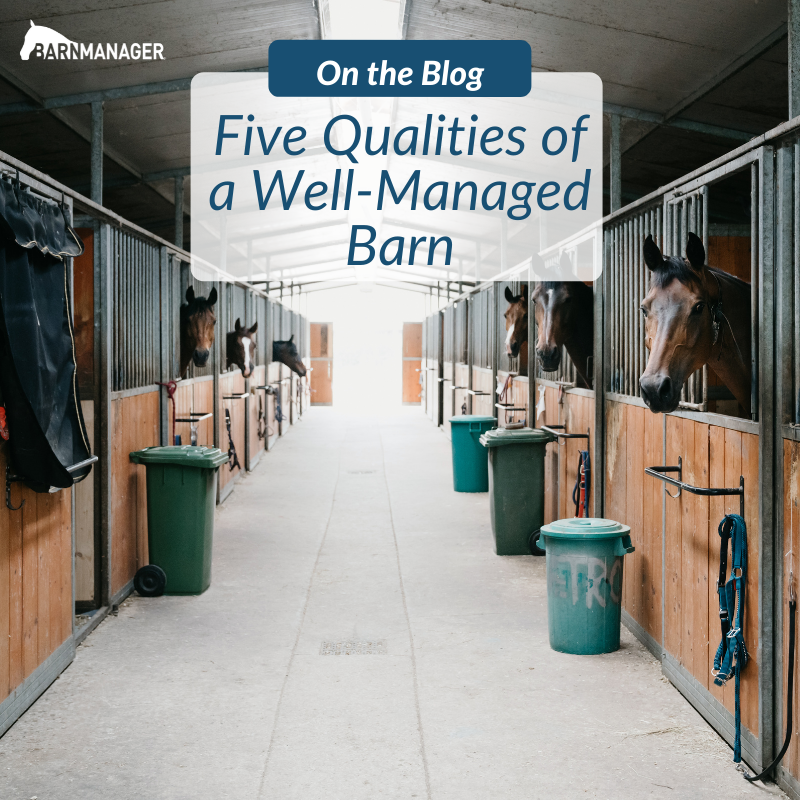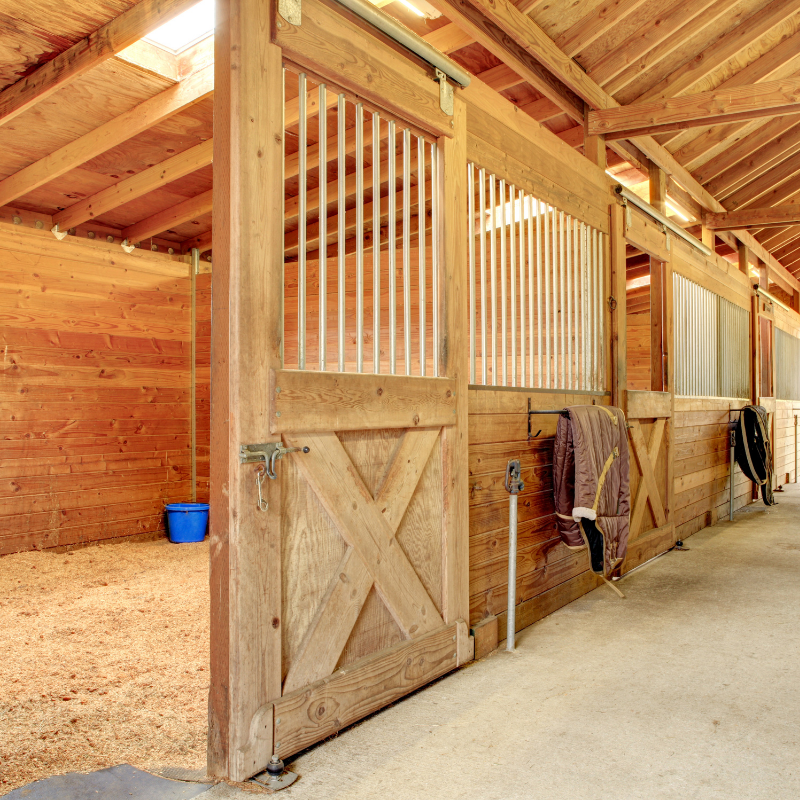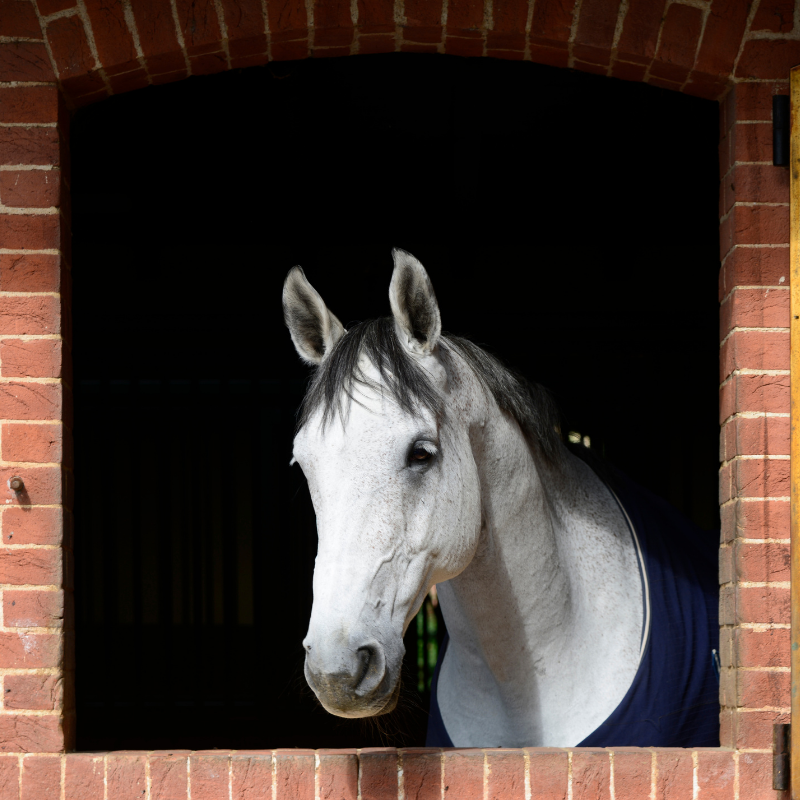
Five Qualities of a Well-Managed Barn
If you are a rider looking for a new place to keep your horse or a manager thinking about how to improve your barn, there are certain qualities that stick out at a well-run stable. Keep reading for five important characteristics of a well-managed barn.

1. Cleanliness
Overall cleanliness is an important detail to look for at a barn. Obviously, no barn will ever be spotless but the aisle, tack room, grooming stalls, and feed room should be swept and neat. It is also important to consider how clean the stalls are kept. Check stalls to see if they have been mucked recently and if the shavings are clean. Inspect water buckets and grain tubs to see if they have been cleaned recently. A dirty water bucket is never a good sign and can have a negative impact on your horse’s health. In the tack room, make sure there is no moldy tack. Bridles that are used less might not look freshly cleaned, but you do not want to see tack that has not been cared for in a long time.
2. Organization
Beyond cleanliness, a definite sign of a well-run barn is organization. You should be able to get a feel of how organized the barn is by simply walking around. Details such as labels in the tack room, a well laid out feed room, and tidy grooming stalls can reveal how important organization is at the barn. If blankets or stable sheets are piled in random places, the barn may not be as organized as one where they are neatly folded on doors or in a specific room or area.
3. Teamwork
A barn where all staff members are communicating and working as a team is always a good sign. This is a must, even at a smaller local barn that does not attend horse shows. When employees are not working together, it can result in issues such as the wrong medication being given to a horse, turning out a horse that is supposed to stay in, or daily tasks being missed or forgotten. To get a feel for the level of communication and teamwork at a barn, try asking different employees a couple of questions about topics like turnout, medication, or feeding times. By spending a little time at the barn, you can observe whether people are only working on their own or if there is a solid flow of communication among employees.

4. Healthy Horses
The care of the horses should always be the top priority. Their condition is often a reflection of how well the barn is managed. Some horses are naturally leaner while others are easy keepers and retired horses will have less muscle than a top-level jumper, but their overall condition should be good no matter what. The horses should not be severely underweight or overweight, they should have a healthy-looking coat whether or not they are clipped, and they should have a bright demeanor.
When a barn has healthy looking horses, it shows that the staff is observant and able to come up with a routine that works for each horse. Especially with feeding, it is important that the barn allows for horses to have individualized programs with differing amounts of hay and grain, types of grain, and supplements depending on specific needs.
5. Reliable Routine and Schedule
A well-run barn should have a fairly clear daily schedule. Grain and hay should be given around the same general times every day. Lesson times should also be clearly written down so that, depending on the type of barn, boarders can schedule a time to ride. Certain instances are difficult to predict, such as timing for a veterinarian coming to check a horse, but overall there should be a schedule for everyone to see and plan around.
Running a well-managed barn is no easy job and an undertaking that should definitely be praised. It is important to see the signs as a rider so you can be sure your horse is in the best care. Understanding the qualities of a well-run barn as a manager can help you up your game and provide top care for the horses at your facility.
Have questions about utilizing BarnManager or want to give it a try for yourself? Request a live demo here!